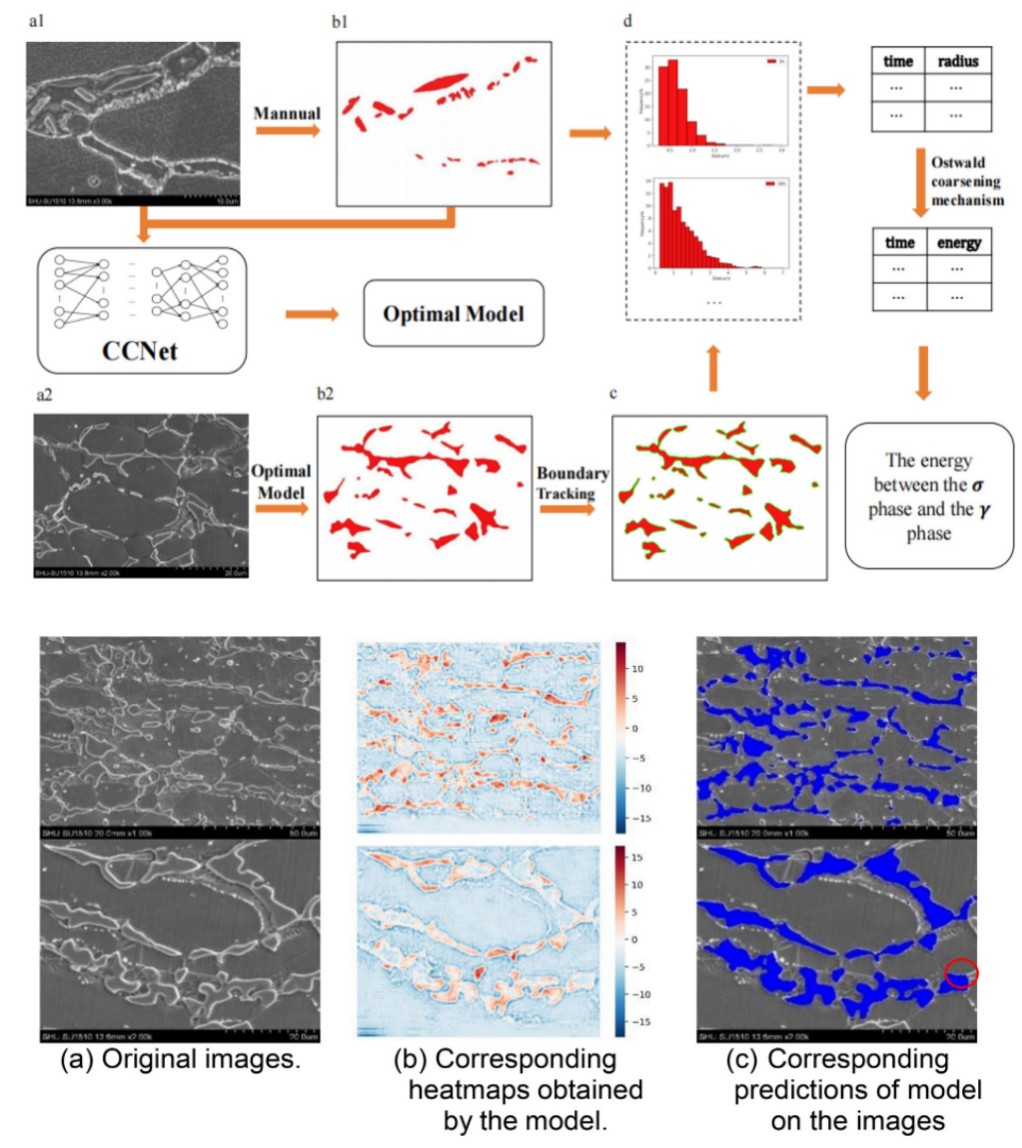Recent Achievement of the Team - Microstructural Evolution and Coarsening Behavior of Precipitates in 2205 Duplex Stainless Steel Aged at 850℃
Our team has published a paper titled “Microstructural evolution and coarsening behavior of the precipitates in 2205 duplex stainless steel aged at 850℃” in the international journal “Journal of Materials Research and Technology” (IF: 6.4, SCI Q1 top). The first affiliation of this paper is the School of Computer Engineering and Science at Shanghai University, with Han Yuexing as the first author and Chi Rutin as the second author. Professor Liu Wei from the Institute of Materials Genome Engineering provided considerable support and assistance. Associate Professor Han Yuexing and Professor He Yanlin from the School of Materials Science and Engineering are the corresponding authors of the paper.

The formation of secondary phases in 2205 duplex stainless steel (DSS) has a significant impact on its mechanical properties. The study of the microstructural evolution and coarsening behavior of precipitates in 2205 DSS has scientific and technological significance. In the current work, the composition and morphology evolution of precipitates in 2205 DSS, coarsening for up to 200 hours at 850°C, were systematically investigated using SEM/EDS (Scanning Electron Microscope/Energy Dispersive Spectroscopy) and TEM (Transmission Electron Microscope) techniques. Additionally, deep learning and digital image processing techniques were employed to perform size statistics on the intermetallic precipitates, particularly the σ phase, based on SEM images. Based on this, the average interfacial energy between the σ phase and γ phase was reasonably estimated using the Ostwald ripening mechanism. This work provides a comprehensive understanding of the microstructural evolution and coarsening behavior of precipitates in 2205 DSS.
Essay: Material structure segmentation method based on graph attention
Our code and paper are both publicly available at: https://github.com/han-yuexing/Roughening-Behavior
